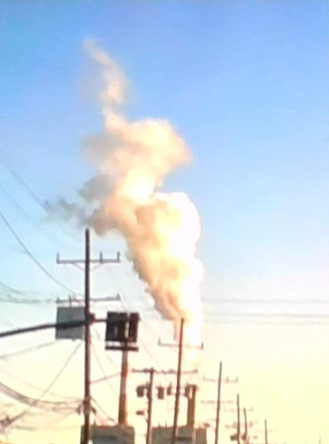The Consequences of Global Warming and Climate Change

Global warming is defined as the rise in average temperature over a long period of time in the Earth’s atmosphere. It is directly linked to climate change because the more prominent global warming is, the more a geographical region can experience a lasting change in climate. This can affect the landscapes and living organisms in that area permanently; global warming impacts weather events, food sources, and animal habitats.
Many have noticed that temperatures do not drop until much later in the winter, as compared to previous years. In Lynbrook, the average temperature for the first week of Dec. 2021 was around 51 degrees Fahrenheit with a monthly high of around 55 degrees Fahrenheit. The average temperature for Dec. in Lynbrook should be 30-46 degrees Fahrenheit, according to the National Oceanic and Atmospheric Administration (NOAA).
A large rise in global temperatures can lead to the extinction of animal species, whose food sources are becoming scarce. “Animals depend on healthy habitats,” said Living Environment teacher Jeanette Meszaros. “They need the right temperatures, fresh water, food sources, and places to raise their young. Climate change is altering habitat elements that are needed for animals to survive and putting natural resources in jeopardy.”
Climate change extends to the ocean, which Meszaros notes as problematic because “warmer waters threaten to cause mass migration of marine species in search of the right conditions for feeding and spawning.”
While global warming does directly cause an increase in the average climate, that does not mean that every day of the year is scorching hot. Irregular temperature patterns – either unusually warm or unusually cold – are an indication of climate change. In Lynbrook during the week of Jan. 11-18, the average temperature was around 42 degrees Fahrenheit with a monthly low of around 15 degrees Fahrenheit. This is a dramatic change from the relatively warm Dec. that preceded. Freshman Caitlin Liu said, “It felt like an enormous drop in temperature.”
According to NASA’s Jet Propulsion Laboratory article entitled “How Climate Change May Be Impacting Storms Over Earth’s Tropical Oceans,” it is inevitable that an increase in global temperatures will lead to an increase in extreme precipitation. The added fossil fuels in the atmosphere add energy, which can “supercharge” a weather event.
For example, Hurricane Dorian in the 2019 hurricane season sped through the Atlantic and grew from a Category-1 storm to a Category-5 storm, becoming the fifth most intense Atlantic hurricane to make landfall. The remains of this hurricane became the fifth wettest recorded tropical cyclone. Both of these storms were fueled by the increasing warm waters in the Gulf of Mexico. Furthermore, a JPL’s team led by AIRS project scientist Hartmut Aumann discovered, using 15 years of AIRS data, that for every 1.8-degrees-Fahrenheit-increase, the number of extreme storms increases by 21%. The researchers concluded from current climate models that extreme storms may increase by 60% by 2100.
Global warming and climate change are significant problems in today’s world. Freshman Emily Franklin said, “Global warming is not talked about enough and we are not doing anywhere near enough to stop it. If we continue to do nothing about this change, there will be huge problems for both humans and animals.”
The Paris Agreement is the international treaty on climate change that was adopted on Dec. 12, 2015. Currently, there are over 185 countries in the Paris Agreement pledging to help slow down processes that can cause global warming. These efforts, however, have not yet solved the ever-growing issue regarding our climate.

Hi! I’m Samantha Petrelli, and I am a member of the Class of 2025. I am an assistant editor for Horizon as well as a member of Key Club, Mathletes, and...












































